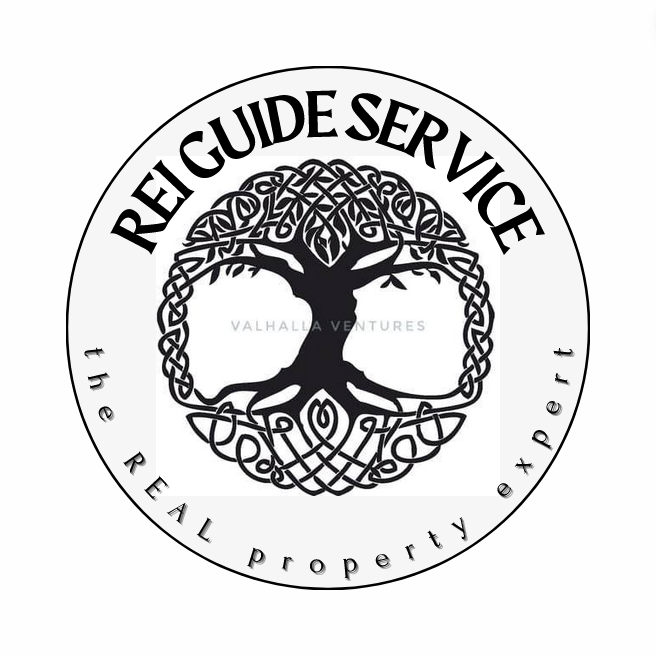The Harsh Truth: Why Single-Family Rentals Won’t Retire You
Why SFH Rentals Are Hard to Retire Off Of
Everyone loves the idea of buying a few rental houses and living off the income. But here’s the hard truth: single-family homes rarely scale enough to replace your income, let alone give you true financial freedom.
Here’s why:
Purchase Price Reality – You need to buy under 65% of ARV MINUS retail repair costs. Not your cousin’s BFF’s “discounted labor.” Retail rates. Because eventually, that’s what you’ll pay.
Holding Costs – They’re not fixed. They rise. Taxes, insurance, utilities, loan payments, all keep eating while you wait for tenants or repairs.
Deferred Maintenance – Even the highest quality new builds need money set aside for repairs, replacements, and updates. Deferred maintenance is the silent killer of profits.
Cashflow Isn’t Optional – You need it just to cover the above, before you ever see a dime in your pocket.
ROI on Your Time – Think about this: To clear $10k a month, you’d need to manage enough rentals where each door nets you $300–$400. That’s 25–35 houses.
25–35 roofs.
25–35 sets of tenants.
25–35 times the management headaches, maintenance calls, tax bills, and insurance renewals.
That’s not passive. That’s a second job, with worse hours.
The truth? SFHs are great for stacking equity and long-term wealth, but terrible as your “retirement plan.” If you want consistent income that doesn’t vanish with a roof leak, property tax hike, or a bad tenant, you need a different model.
Why SFH Rentals Are So Difficult (Even with Tax Breaks)
Scale Kills You – You can only raise rents so much on a single unit, but expenses keep climbing. Inflation, property taxes, and insurance almost always outpace your rental increases.
Deferred Maintenance Never Goes Away – Roofs wear out, AC units die, appliances break. Even “new builds” need major repairs every 10–15 years. You’re just trading one cost today for a bigger cost tomorrow.
Tax Deferments Are a Band-Aid, Not a Cure –
1031 exchanges just kick the tax bill further down the road—you don’t escape it.
Depreciation recapture on sale can be brutal.
And “paper losses” don’t fix negative cash-flow, you can’t eat depreciation.
Vacancy Risk – One bad tenant, eviction, or extended turnover and your entire year’s profits are gone. With only 1–2 units, the risk concentration is massive.
Management Fatigue – Either you manage it yourself (nights, weekends, constant calls)… or you pay someone else 8–12% of gross rent. Either way, it eats into “passive” returns.
Financing Limits – Most banks cap you at 10 mortgages per person. After that, financing gets harder and more expensive, making it difficult to scale SFHs fast enough to hit retirement-level income.
Inefficient Equity – You lock up $50K–$100K per house in down payments and reserves… but each property only nets you $300–$400/month. That’s a terrible return on the time and capital required.
Market Cycles Hurt More – In downturns, rents don’t drop much, but values do. You’re equity-rich but cash-poor. And if you need to sell during a down cycle, your retirement plans get crushed.
Insurance and Tax Surprises – Local governments and insurance companies love landlords. Which means surprise revaluations and rate hikes are guaranteed to show up… always at the worst possible time.
Time ROI – If your goal is $10K/month net, you need 25–35 houses. That’s 25–35 roofs, HVAC systems, tenants, tax bills, and management headaches. That’s not freedom, that’s a job with more liability.
SFHs can build equity over time, but that doesn’t mean they build wealth you can live on.
Here’s the real distinction:
Equity ≠ Cashflow – A house may go up in value, but unless you sell or refinance, you can’t spend equity. And when you do sell, that gain gets eaten by transaction costs, capital gains, and depreciation recapture.
Leverage Creates the Illusion – People say, “Look, my net worth went up $50K because the house appreciated!” But until that’s turned into liquid cashflow, it’s just a paper number. And the cost of carrying that house (repairs, vacancies, taxes, insurance) often strips away most of the “profit” anyway.
The Forced Piggy Bank – Paying down a mortgage over 30 years creates equity, yes. But it’s one of the slowest, most inefficient ways to build wealth. You’re tying up capital you could have multiplied elsewhere.
Deferred Wealth is Risky Wealth – If you’re counting on appreciation and debt paydown to make you rich someday, you’re gambling on market cycles and interest rates lining up perfectly.
So, when gurus say “SFHs build long-term wealth,” they’re not lying, they’re just leaving out the fact that it’s locked-up, illiquid wealth that doesn’t pay the bills. And without cashflow, you’ll bleed out long before you can retire.

